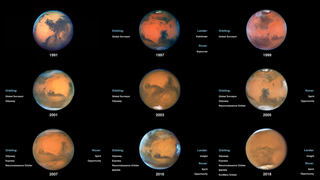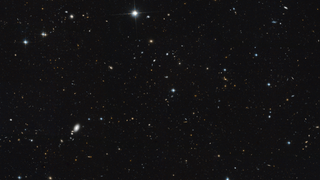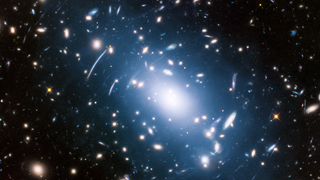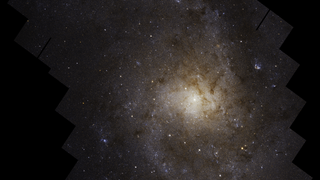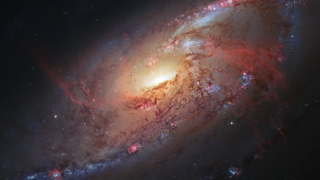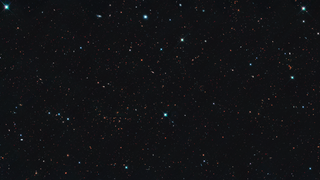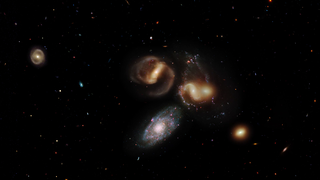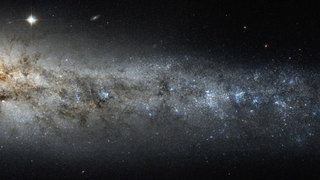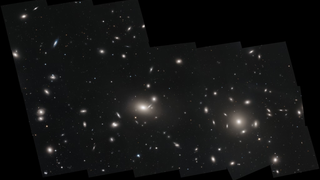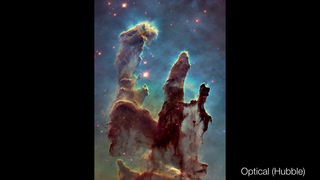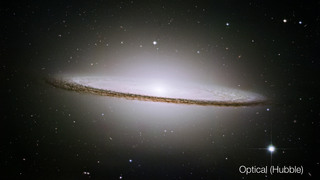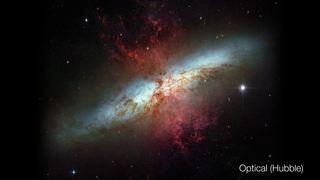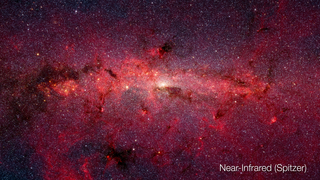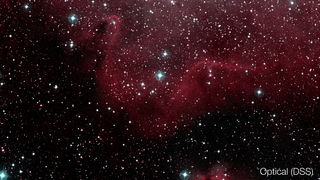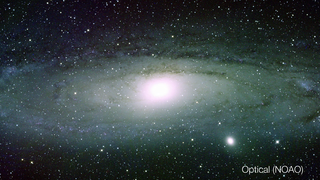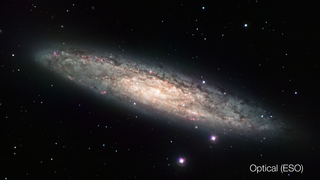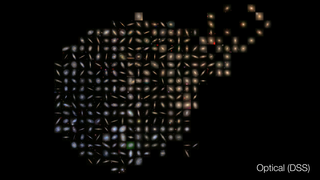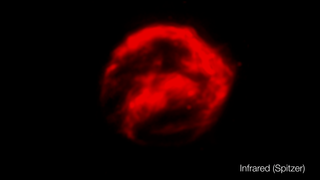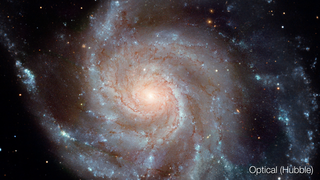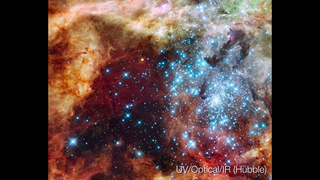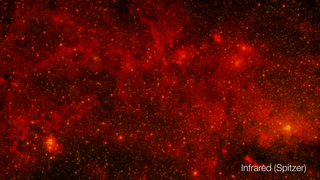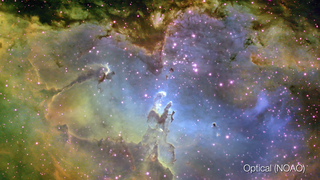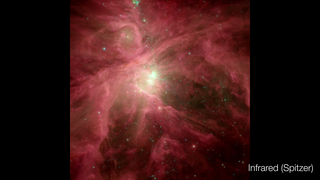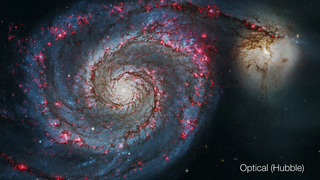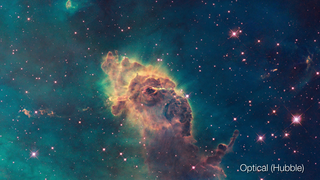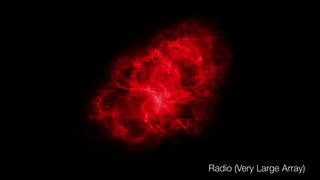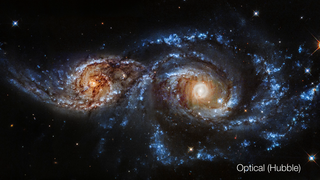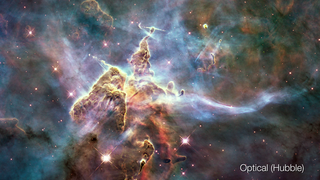Universe
ID: 30981
Messier 81 (M81) is a classic example of a spiral galaxy. Star-forming regions in this galaxy become evident in the infrared view. In the infrared, the spiral arm structure becomes much more powerful relative to the visibly bright galactic center, revealing denser concentrations of cold dust and gas ready to be transformed into new stars.
Optical: Stars are partly obscured by dust.
Near-Infrared: Longer infrared wavelengths now show star-forming areas in red.
Far-Infrared: Shifting to infrared light reveals the dust lanes in red.
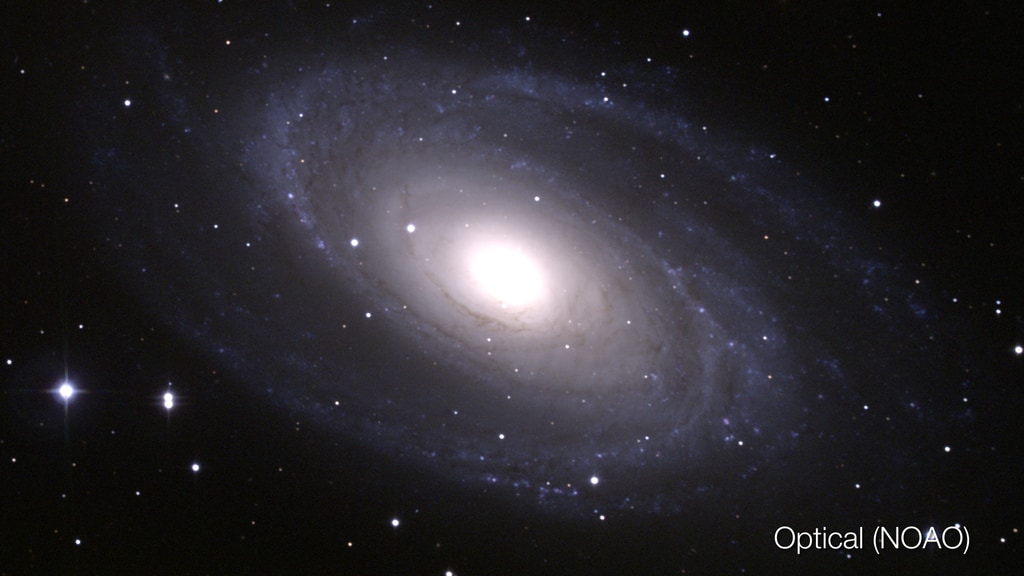
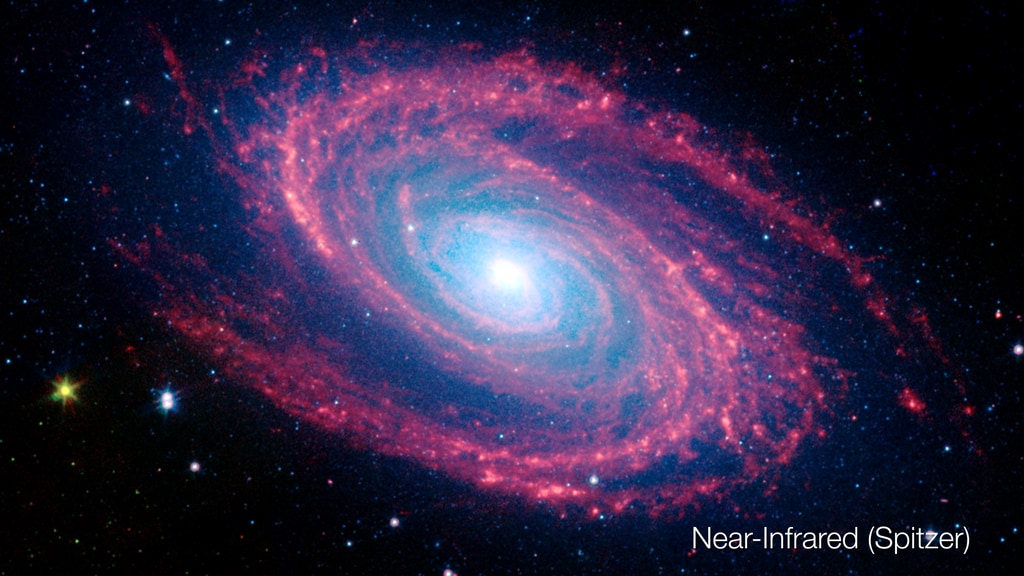
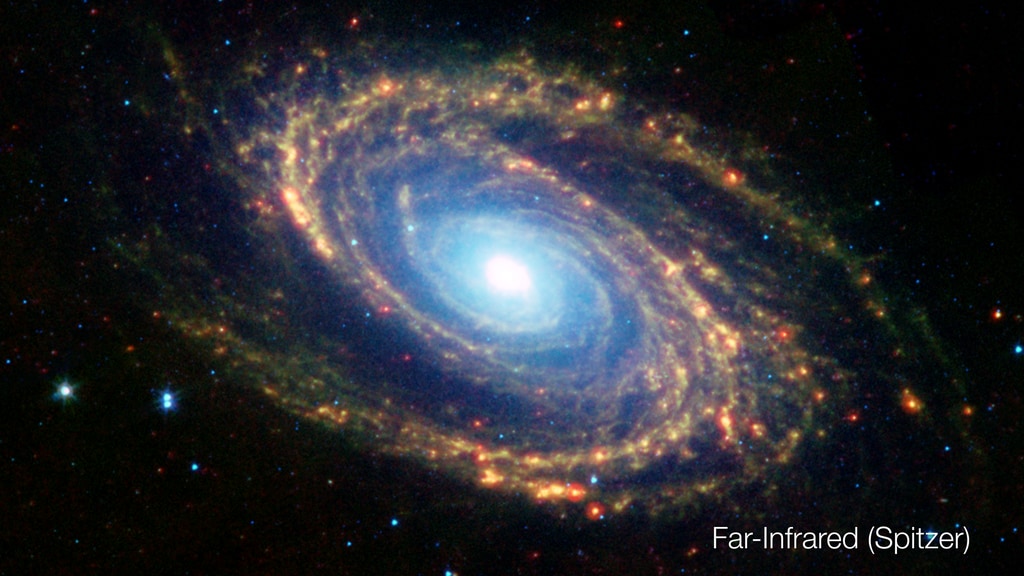
Messier 81 in Multiple Wavelengths
Optical: Stars are partly obscured by dust.
Near-Infrared: Longer infrared wavelengths now show star-forming areas in red.
Far-Infrared: Shifting to infrared light reveals the dust lanes in red.



Related
Credits
Greg Bacon (STScI): Visualizer
Nigel A. Sharp (NSF): Image Processing
Steven Willner (Harvard-Smithsonian Center for Astrophysics): Image Processing
Karl Gordon (The University of Arizona): Image Processing
Leann Johnson (Global Science and Technology, Inc.): Technical Support
Nigel A. Sharp (NSF): Image Processing
Steven Willner (Harvard-Smithsonian Center for Astrophysics): Image Processing
Karl Gordon (The University of Arizona): Image Processing
Leann Johnson (Global Science and Technology, Inc.): Technical Support
Please give credit for this item to:
Video: NASA, ESA, and G. Bacon (STScI) Image Credits:
Video: NASA, ESA, and G. Bacon (STScI) Image Credits:
- Optical: N.A. Sharp (NOAO, AURA, NSF)
- Near-infrared: NASA, JPL-Caltech, S. Willner (Harvard-Smithsonian Center for Astrophysics)
- Far-infrared: NASA, JPL-Caltech, K. Gordon (University of Arizona) and S. Willner (Harvard-Smithsonian Center for Astrophysics)
Short URL to share this page:
https://svs.gsfc.nasa.gov/30981
Mission:
Spitzer Space Telescope
Data Used:
Note: While we identify the data sets used in these visualizations, we do not store any further details nor the data sets themselves on our site.
Keywords:
SVS >> Dust
SVS >> Galaxy
SVS >> Gas
SVS >> HDTV
SVS >> Infrared
SVS >> Hyperwall
SVS >> Star
NASA Science >> Universe
SVS >> Star Formation
https://svs.gsfc.nasa.gov/30981
Mission:
Spitzer Space Telescope
Data Used:
Spitzer Space Telescope
NASA JPL/Cal TechNational Optical Astronomy Observatory (NOAO)
Keywords:
SVS >> Dust
SVS >> Galaxy
SVS >> Gas
SVS >> HDTV
SVS >> Infrared
SVS >> Hyperwall
SVS >> Star
NASA Science >> Universe
SVS >> Star Formation
